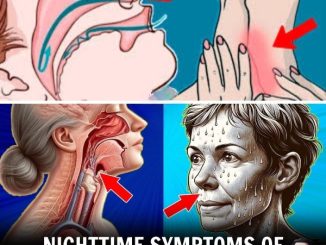Insects are a common part of life, and unfortunately, most of us have experienced the unpleasant sensation of a bug bite. While some bites are harmless, others can cause pain, swelling, or even transmit diseases. The challenge is identifying the culprit behind the bite, especially when symptoms overlap. Don’t worry, we’ve created a guide to help you identify 10 common bug bites so that you can take the necessary steps for treatment and protection.
1. Hornet Bite: Severe Swelling and Intense Pain

A hornet sting is known for its intensity, often causing immediate redness and significant swelling around the affected area. Unlike a wasp or bee sting, a hornet’s sting can leave behind blisters, and the pain is typically sharper and longer-lasting. The venom contains histamine and acetylcholine, which cause intense pain. If a person experiences symptoms like cold limbs, blue lips, or breathing difficulties after being stung by a hornet, it’s crucial to seek medical attention immediately.
2. Bee Sting: Burning Pain and Potential Allergic Reaction
A bee sting is usually accompanied by immediate pain, followed by redness, swelling, and itching. The stinger often remains embedded in the skin and needs to be removed. Although most people experience only localized discomfort, those allergic to bee venom can suffer from severe allergic reactions, including anaphylaxis. If you’re allergic or experience symptoms like difficulty breathing or swelling away from the sting site, seek medical care right away.
3. Wasp Sting: Painful and Persistent
Wasps can sting multiple times, and their stings often result in redness, swelling, and a burning sensation. The pain and itching can last for hours, and in some cases, the sting area may develop a hemorrhage under the skin. Like bee stings, wasp stings can also lead to anaphylactic shock in those with allergies. If you know you are allergic to wasp stings, carry an epinephrine auto-injector as a precaution.
4. Mosquito Bite: Itchy, Red Swelling
Mosquito bites are incredibly common and recognizable. They often appear as small, swollen red spots that itch intensely. Mosquitoes bite in areas where the skin is thin, injecting their saliva, which contains anticoagulants that allow them to feed on your blood. Although mosquito bites are usually harmless, they can transmit diseases such as malaria, Zika, and West Nile virus in certain regions.
5. Tick Bite: Red Spot with Potentially Dangerous Consequences
Tick bites are concerning because ticks can remain attached to the skin for extended periods while feeding on blood. The bite typically causes a small, red spot, but ticks are notorious for transmitting diseases like Lyme disease and Rocky Mountain spotted fever. If you notice a tick bite that develops a rash or the red spot starts growing, seek medical advice immediately.
6. Flea Bite: Small, Red, and Intensely Itchy
Flea bites are often mistaken for mosquito bites due to their small, red, and swollen appearance. However, flea bites tend to itch much more severely and can be very painful. Fleas typically bite the legs or feet, often in clusters or lines. Flea bites can also transmit infections such as the bubonic plague or murine typhus, though these diseases are rare.
7. Ant Bite: Burning Sensation and Potential Allergic Reaction

Most ants are harmless, but the red fire ant is an exception. Fire ant bites cause painful, burning sensations, followed by the formation of pustules that can leave scars. These ants inject venom that can trigger allergic reactions, and in severe cases, anaphylaxis. Other ants, like the thatching ant, cause pink spots that itch for a long time and produce a sharp burning pain.
8. Cleg Bite: Painful and Potentially Dangerous

A cleg, also known as a horsefly, is a large fly with a painful bite. Unlike mosquitoes, clegs cut into the skin and drink blood, leaving behind a small red spot that swells and itches. Cleg bites can transmit diseases like tularemia and anthrax, though these diseases typically affect livestock. While humans are less likely to be infected, the bite can still be painful and irritating.
9. Lice Bite: Red Dots on Hairy Areas of the Body

Lice bites are small, red dots found in areas where hair grows, such as the scalp, neck, or behind the ears. If these dots appear on the body (back, belly, or legs), it’s likely due to body lice, also known as cooties. Lice bites are close together and cause intense itching. Lice can also transmit dangerous diseases like typhoid fever or trench fever.
10. Bed Bug Bite: Clustered Red Spots in a Line

Bed bug bites are often confused with mosquito or flea bites, but there’s a key difference—the bites are typically arranged in clusters or lines. Bed bug bites appear as small, swollen, red welts that are intensely itchy. These nocturnal insects feed on blood, and their bites are more painful than those of mosquitoes. Bed bugs usually leave multiple bites on exposed skin, often noticed in the morning after a night of feeding.
How to Respond to Bug Bites
Knowing which insect bit you can help guide your response. Here are some general tips for managing bug bites:
- Clean the Area: Wash the bite with soap and water to reduce the risk of infection.
- Reduce Swelling: Apply a cold compress or an over-the-counter antihistamine to reduce swelling and itching.
- Avoid Scratching: Scratching can lead to infections, so resist the urge to itch the bite.
- Monitor for Allergic Reactions: If you experience difficulty breathing, swelling, or dizziness after a bite, seek medical attention immediately.
Conclusion: Stay Informed and Be Prepared
Bug bites are an unfortunate part of life, but by learning to identify them, you can take the appropriate steps for treatment and protection. From the painful sting of a hornet to the itchy welts of a mosquito, each bite has its unique characteristics. While some are harmless, others can pose serious health risks, making it important to stay vigilant and informed.
By understanding what to look for, you’ll be better equipped to protect yourself and your family from the discomfort and potential dangers of bug bites. Stay safe, and share this guide to help others recognize these common bug bites!


